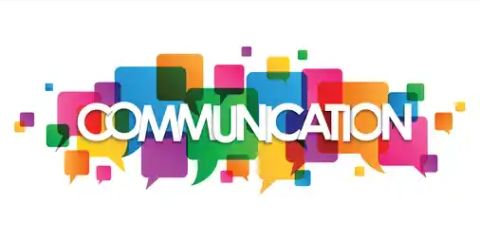Achieving an organization’s objectives is the responsibility of management. To accomplish this, managers draft a strategy outlining what must be done when it must be done, and how it should be done.
Managers must tell everyone in the company of this knowledge to carry out the plan. In other words, they have to tell the group’s members about the plan. However, managers need to take far more action than simply telling workers what to do to support the plan.
They must also inspire employees to support the strategy, foster organizational commitment, foster communication and cooperation, and keep everyone up to date on developments that could have an impact on the organization.
In addition to informing, effective communication fosters a culture that encourages support for the organization among its members.
What can happen as a result of inadequate communication is demonstrated in the introductory example.
Several advantages of excellent communication are listed below.
1. It gives direction: Ambiguity, uncertainty, and confusion make people uncomfortable and unwilling to cooperate. Clarifying roles, responsibilities, and relationships equips everyone with the knowledge they need to do their duties and comprehend how they contribute to the organization. Conflicts, misunderstandings, and errors are cheaper to resolve when there is effective communication.
2. Fosters Relationships: A culture that values open communication helps to ease tension between employees at different levels of the hierarchy on both a social and a professional level.
People are more inclined to ask for assistance with difficulties and to suggest solutions and changes in an environment where trust and collaboration are valued. Collegial cultures that promote teamwork and cooperation are developed through effective communication.
3. Foster’s commitment: Information must be received to be effectively communicated, in addition to being sent. Managers may create a culture where all employees feel appreciated by listening to their problems, allowing them to have a say in their job and environment, and taking into account their suggestions.
Worker engagement and motivation are likely to increase when they feel valued by the company.
4. Specifies expectations: People are unable to perform to their full potential when they are unclear about what is expected of them and how their performance will be assessed.
The employee does not know the performance standards they are required to meet, making performance reviews challenging. And if corrective actions are required, the employee can be disgruntled if he doesn’t understand how his actions made him less productive.
When standards and expectations are clear, workers know what they must accomplish to receive great reviews and the rewards that go along with it.
Communication Systems: Formal and Informal
In the majority of enterprises, formal and informal information systems exist. The techniques used to transmit the information required for a company to run its business are known as formal communication systems.
Formal communications adhere to the standards and laws set forth by their respective professions or laws (for example, formal reporting procedures for tracking injuries in the workplace). This is the knowledge that is shared within the chain of command or job duties.
The message can be to follow certain steps to give supervisors regular progress reports. To discuss the progress of a project, there may be scheduled meetings.
To introduce new rules and procedures, human resources may organize seminars. The formal communication system ensures that the organization receives the necessary information while also controlling how it is disseminated.
Progress reports and project meetings are not always open to all employees in a company. Systems of formal communication make a guarantee that only those who require information have access to it.
Not all communication within a company is formal or under strict control. Outside of the formal system are informal communication channels.
In an organization, informal networks can link practically everyone to anyone else. Hierarchical levels, transitions between departments, and functions are all ignored.
We saw how misinformation communicated through the informal system can hurt an organization in the first instance. Informal communication channels are not always disruptive, though.
Informal networks are often the main means through which information is disseminated and work is completed in many organizations. In certain companies, getting the job done is more about who you know than what you know.
The grapevine and social networks are the two primary categories of informal communication systems.
Personal connections that transcend organizational, departmental, and hierarchical boundaries make up a social network.
Anyone in a social network can contact anyone else in the network for advice or support. He can even ask for assistance from another group through the connection member.
People with extensive social networks have access to a wealth of information, and connecting people can help disseminate information throughout a company. In an organization, connecting people has a lot of power.
Within a company, rumors are passed about through the grapevine. The phrase “grapevine” can also refer to a rumor mill.
Because almost everyone participates in gossip in some fashion, it is a remarkably efficient method of disseminating information.
In actuality, word-of-mouth communication frequently distributes information more quickly than official channels.
Unfortunately, since the information is not under strict control, it may be misrepresented or even entirely made up. When formal communications fall short, the grapevine becomes especially crucial.
People dislike having questions about circumstances that directly affect them. When the official system does not offer information, people look for and disseminate information through word-of-mouth.
Although it can follow links from social networks, a grapevine is unstructured and transitory, in contrast to a social network.
Through casual gatherings, overheard discussions, and chance encounters, information spreads through the grapevine.
The speed and spread of grapevines have been significantly accelerated by social media and electronic communication.
In conclusion, These are only a handful of the numerous advantages that result from excellent communication.
When everyone in the organization is dedicated to the goals, managers can only accomplish organizational objectives.
When they are informed and engaged, people perform significantly better.











